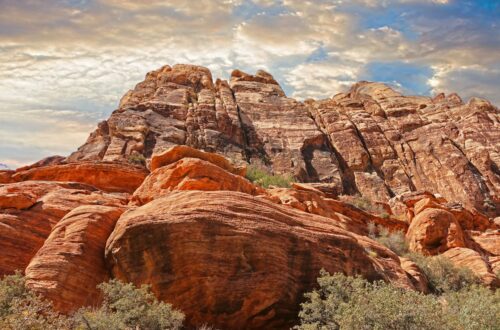
24 Interesting Facts About Alaska: Unveiling the Great Land
24 Interesting Facts About Alaska
Alaska, often referred to as the “Last Frontier” or the “Great Land,” is a realm of unparalleled beauty and intriguing history. As the largest state in the United States, it boasts a plethora of wonders that many are unaware of. Indeed this article aims to shed light on some of the most captivating and interesting facts about Alaska, ensuring readers gain a deeper appreciation for this majestic state.
The Geographical Marvel
The Size and Scale
Notably Alaska, with its vast land area, is over twice the size of Texas. It encompasses more than 663,000 square miles, making it the biggest state in the United States.
Despite its massive size, Alaska has the lowest population density in the country. Additionally, this vast land is home to pristine wilderness, untouched by the hustle and bustle of urban life.
Facts About Alaska: Majestic Peaks and Valleys
Alaska is home to 17 of the 20 highest peaks in North America. The tallest mountain, previously known as Mount McKinley, is now recognized as Denali. In fact, standing at a staggering 20,310 feet above sea level, it’s a sight to behold.
The state also houses the largest glacier in North America, the Bering Glacier, which stretches over 100 miles.
Facts About Alaska: Nature’s Spectacular Display
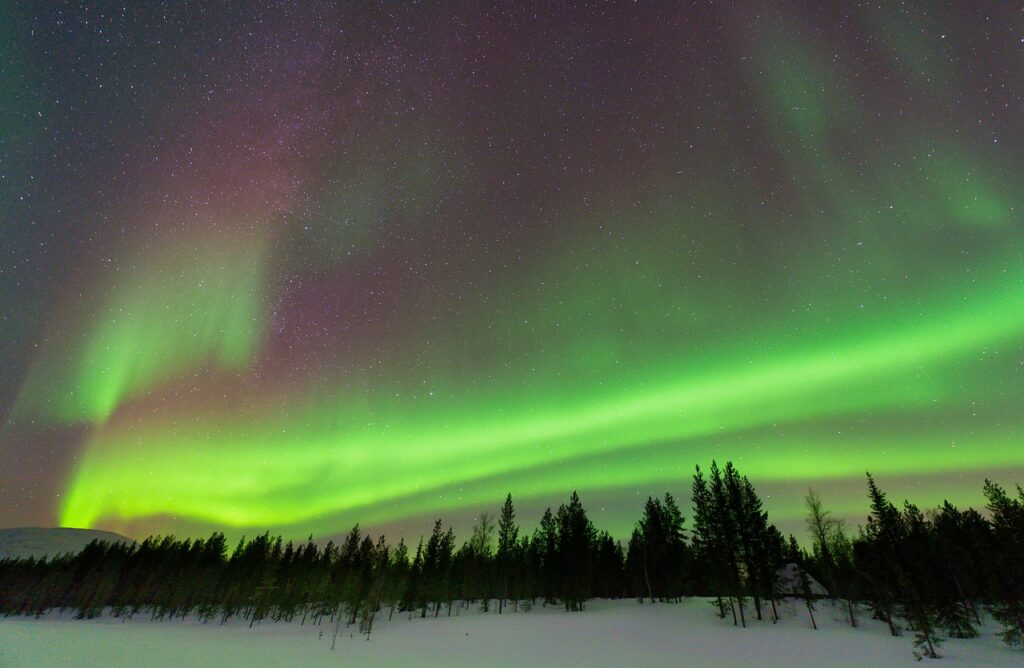
The Dance of the Northern Lights
Of course, one of the most sought-after experiences in Alaska is witnessing the Aurora Borealis or Northern Lights. Hence this natural light display in the Arctic and Antarctic regions is a mesmerizing sight, with colors dancing across the night sky.
Wildlife Wonders
Grizzly bears, polar bears, and black bears – oh my! Alaska is a haven for wildlife enthusiasts. In fact, the state is home to the largest population of grizzly bears in the United States.
Also, the Yukon River, the third longest river in the U.S., is a thriving habitat for salmon, making it a prime location for fishing.
Facts About Alaska: A Dive into History
The Indigenous Roots
Long before it became the 49th state of the United States, Alaska was home to indigenous people. Indeed the Alaska Natives have a rich history and culture that dates back thousands of years.
World War II and Alaska
Few are aware that during World War II, Japanese soldiers invaded the Aleutian Islands in Alaska. This marked the only battle fought on American soil during the war.
Frequently Asked Questions Facts About Alaska

What is the significance of the Big Dipper on Alaska’s state flag?
Designed by a 13-year-old boy named Benny Benson, the state flag features the Big Dipper and the North Star. Indeed, it symbolizes strength, unity, and the state’s northern location.
Why is Alaska called the “Land of the Midnight Sun”?
During the summer solstice, certain parts of Alaska experience 24 hours of daylight. This phenomenon has earned it the title “Land of the Midnight Sun.”
Facts About Alaska: Alaska’s Natural Wonders
The Enchanting Forests
The Tongass National Forest, spanning 16.7 million acres, holds the title of the largest national forest in the United States. Therefore this rainforest is a sanctuary for diverse wildlife, including the majestic bald eagle and the elusive wolf.
The state also boasts the largest lake, Lake Iliamna, which covers an impressive 1,000 square miles. As a result it’s a hotspot for freshwater fishing. And is rumored to house its own version of the Loch Ness Monster!
The Coastal Charm
With over 34,000 miles of coastline, Alaska has more shoreline than all the other U.S. states combined. Indeed this vast stretch is dotted with breathtaking fjords, bays, and islands. The Bering Sea, Pacific Ocean, and Arctic Ocean all kiss Alaska’s shores, making it a unique confluence of waters.
Furthermore Kodiak Island, the second-largest island in the United States, is renowned for its brown bears. Which are among the largest in the world.
The Cultural Tapestry
The Iditarod Trail Sled Dog Race
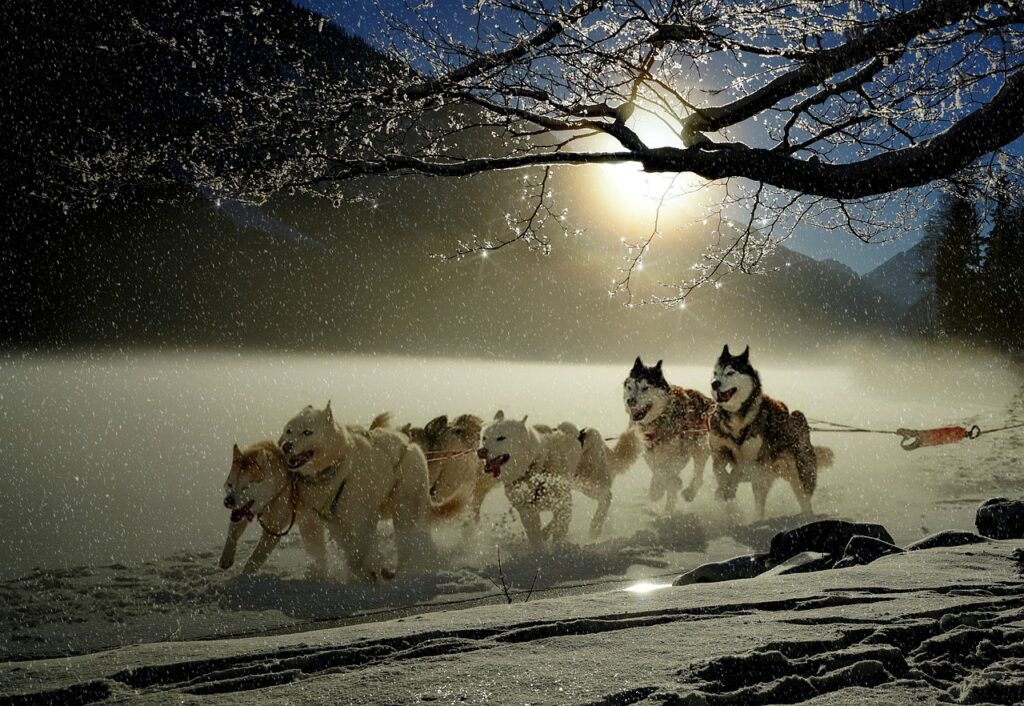
Firstly, dog mushing isn’t just a sport in Alaska; it’s a cherished tradition. The Iditarod Trail Sled Dog Race, often termed “The Last Great Race,” is a testament to the state’s rich dog mushing heritage. Spanning over 1,000 miles from Anchorage to Nome, this race is a thrilling spectacle that draws participants and spectators from around the globe.
The Legacy of the Klondike Gold Rush
In the late 19th century, the Klondike Gold Rush lured thousands to Alaska’s terrains in search of fortune. Towns like Skagway and Dawson City thrived during this period, and remnants of this era can still be witnessed in the form of preserved buildings and museums.
Alaska’s Geographical Anomalies
The Mystery of the Easternmost Point
Interestingly, Alaska’s Semisopochnoi Island holds the title of both the westernmost and easternmost point of the United States. This is due to its location relative to the International Date Line.
The Volcanic Landscape
Alaska is a geothermal wonder, housing over 130 active volcanoes. The Aleutian Islands, in particular, are part of the Pacific Ring of Fire and have witnessed numerous volcanic eruptions. Furthermore, evidence illustrates that the ash from these eruptions can travel thousands of miles, affecting even the lower 48 states.
Fact: The most powerful volcanic eruption of the 20th century occurred at Novarupta in the Katmai region of Alaska in 1912. This eruption was 30 times more potent than the eruption of Mount St. Helens in 1980. [Source: National Park Service]
Facts About Alaska: The Alaskan Lifestyle
Living Under the Northern Star
Alaska’s unique geographical location means it experiences some of the most distinct day-night cycles. As a result the phenomenon of the “Land of the Midnight Sun” in summer contrasts sharply with the long, dark winters where the sun barely rises above the horizon.
The Alaskan Malamute
Named after the native Inuit tribe called the Mahlemuts, the Alaskan Malamute is a powerful sled dog known for its strength and endurance. Thus these dogs have been an integral part of Alaskan culture, aiding in transportation and companionship.
Alaska’s Unique Attractions

The Trans-Alaska Pipeline
Stretching 800 miles from Prudhoe Bay to Valdez, the Trans-Alaska Pipeline is an engineering marvel. Having been built in the 1970s. Also, this pipeline transports oil from the North Slope to the southern coast. Therefore the pipeline is elevated in many areas to protect the permafrost. Hence, it allows for the migration of wildlife.
The Hammer Museum
Located in Haines, the Hammer Museum is a quirky attraction that celebrates the history and diversity of hammers. In fact, with over 2,000 hammers on display, it’s a testament to Alaska’s penchant for the unique and unexpected.
Alaska’s Environmental Concerns
The Impact of Climate Change
Firstly, as a polar region, Alaska is at the forefront of the effects of climate change. In addition, rising temperatures have led to the melting of glaciers and ice fields at an alarming rate. This not only impacts the natural habitat but also poses a threat to indigenous communities. Whose livelihoods are intertwined with the land and sea.
Conservation Efforts
Recognizing the importance of its unique ecosystems, Alaska has numerous conservation programs in place. The Alaska Department of Fish and Game, for instance, plays a pivotal role in ensuring sustainable practices in hunting and fishing.
The Rich Tapestry of Alaskan Natives

Diverse Cultures and Traditions
Alaska is home to a rich tapestry of indigenous cultures, including the Tlingit, Haida, Yupik, and Inupiat. Thus, each group has its distinct traditions, languages, and art forms. Such as Totem poles, intricate beadwork, and ceremonial dances are just a few of the cultural treasures that these communities have preserved over the centuries.
The Role of Indigenous People in Conservation
Furthermore, the indigenous communities of Alaska have always been stewards of the land. Indeed their deep-rooted connection to nature has made them vital partners in conservation efforts. Also, their traditional knowledge, passed down through generations, offers invaluable insights into sustainable living and coexistence with nature.
Alaska’s Culinary Delights
Seafood Galore
Given its extensive coastline, it’s no surprise that seafood is a staple in Alaskan cuisine. For instance, seafood ranging from succulent king crab legs to rich salmon dishes, the state offers a culinary journey for seafood aficionados. The Bering Sea, in particular, is one of the most productive fisheries in the world.
Wild Berries and Delicacies
At the same time Alaska’s wilderness offers a bounty of wild berries, including blueberries, lingonberries, and cloudberries. In fact, these berries are often used in traditional dishes, jams, and desserts. Another unique Alaskan treat is Akutaq. Also known as Eskimo ice cream. A blend of whipped fat, berries, and sometimes fish.
The Allure of the Bering Strait

A Natural Bridge Between Continents
The Bering Strait, a narrow waterway, separates Alaska from Russia. Historically, it’s believed that this strait served as a bridge for early humans migrating from Asia to North America. Today, it’s a vital passage for marine life and holds geopolitical significance.
The Magic of Alaskan Festivals
Celebrating the Solstices
Alaska’s unique geographical position means it experiences some of the most dramatic shifts in daylight. The summer solstice, where the sun barely sets, is celebrated with fervor, especially in places like Fairbanks. Conversely, the winter solstice, the shortest day of the year, is marked with festivals that light up the long night.
The Iditarod Festival
Beyond the race itself, the Iditarod Trail Sled Dog Race sparks a series of festivities. With ceremonial starts, musher banquets, and a plethora of related events, it’s a time when the spirit of Alaska truly shines.
Alaska’s Architectural Wonders
Russian Influence in Architecture
Alaska’s history as a Russian territory before its purchase by the United States in 1867 is evident in its architecture. Russian Orthodox churches with their iconic onion domes can be found in places like Sitka and Kodiak.
Indigenous Ingenuity
The indigenous people of Alaska have, for centuries, built structures adapted to the harsh climate. The Inupiat, for instance, constructed semi-subterranean homes called “qargi,” which offered insulation against the cold.
The Mystique of the Aleutian Islands

A Chain of Volcanic Wonders
The Aleutian Islands, stretching over 1,200 miles, are a chain of volcanic islands that form the northern part of the Pacific Ring of Fire. Their rugged beauty, combined with their rich history, makes them a fascinating part of Alaska.
World War II and the Aleutians
The Aleutian Islands played a significant role during World War II. The islands of Attu and Kiska were occupied by Japanese forces, leading to the only battles fought on North American soil during the war.
The Economic Landscape of Alaska
The Role of Oil and Gas
Alaska’s economy is heavily influenced by its oil and gas industry. Also the discovery of oil in Prudhoe Bay in the 1960s transformed the state’s economic landscape. In fact the Trans-Alaska Pipeline, which transports this oil, is a testament to the industry’s significance.
Tourism and Its Impact
With its natural wonders, wildlife, and unique cultural experiences, Alaska is a prime tourist destination. Tourism plays a vital role in the state’s economy, with many businesses catering to the influx of visitors during the peak seasons.
Alaska’s Sporting Legacy
Dog Mushing: The Official Sport
Dog mushing holds a special place in the hearts of Alaskans. Recognized as the official state sport, it reflects the state’s history and the essential role sled dogs played in transportation and communication in bygone eras.
Fishing: A Way of Life
Fishing is not just an economic activity in Alaska; it’s a way of life. From the salmon runs in the Yukon River to the halibut in the Gulf of Alaska, fishing is deeply ingrained in the state’s culture and traditions.
The Art and Culture of Alaska

Native Artistry
The indigenous communities of Alaska have a rich artistic heritage. From intricate beadwork and carvings to the majestic totem poles that tell stories of clans and legends, Alaskan Native art is a reflection of its people’s deep connection to the land and their ancestors.
Music and Dance
Music and dance are integral to Alaskan culture. The indigenous dances, accompanied by rhythmic drumming, narrate stories of nature, hunts, and myths. Hence festivals like the Alaska Folk Festival in Juneau celebrate the state’s diverse musical traditions.
The Scientific Significance of Alaska
Studying Climate Change
Alaska’s rapidly changing environment makes it a crucial location for climate change research. Scientists from around the world converge on Alaska to study melting glaciers, shifting habitats, and the effects of warming temperatures on local ecosystems.
Astronomy and the Northern Skies
The clear skies of northern Alaska provide an excellent vantage point for astronomical observations. The aurora borealis, in particular, has been a subject of study, leading to a better understanding of Earth’s magnetic fields and solar winds.
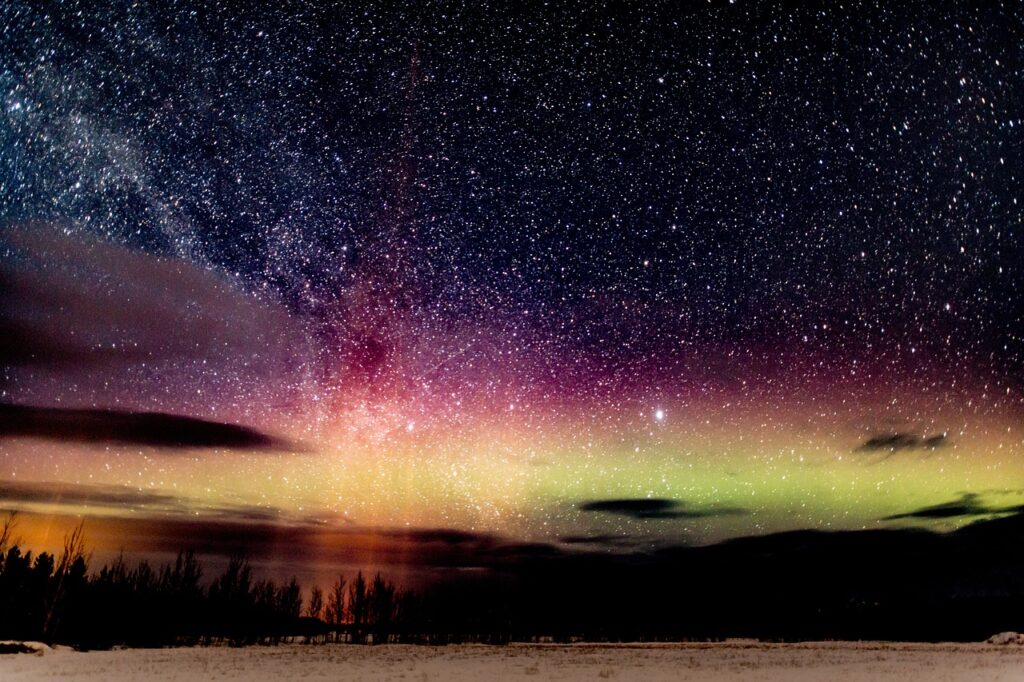
The Legends and Folklore of Alaska
Tales of the Tundra
Alaska’s vast landscapes are steeped in legends. Stories of spirits, sea creatures, and mysterious phenomena have been passed down through generations. The tale of the Qalupalik, for instance, speaks of a sea creature that kidnaps children who venture too close to the water’s edge.
Facts About Alaska: The Legend of Denali
Denali, the highest peak in North America, is not just a mountain but a symbol of reverence. Indigenous stories speak of “The Great One” as a pillar that connects the earth and the sky, a place where the spirits reside.
Modern Alaska: Trends and Transformations
Technological Advancements
While Alaska retains its rustic charm, it’s also embracing modernity. Cities like Anchorage are becoming hubs for tech startups, and there’s a growing emphasis on sustainable technologies, especially in energy production.
Facts About Alaska: Fashion and Lifestyle
Alaskan fashion is a blend of functionality and style. While traditional garments like the parka are designed to withstand the cold, contemporary Alaskan fashion is making waves in the global scene, with designers incorporating indigenous patterns and sustainable materials.
Alaska’s Future: Challenges and Opportunities

Sustainable Development
As global attention shifts towards sustainability, Alaska faces the challenge of balancing development with conservation. The state’s rich natural resources, from fisheries to forests, need to be managed with foresight to ensure they remain for future generations.
Empowering Indigenous Communities
Ensuring that the rights and traditions of Alaska’s indigenous people are respected and preserved is crucial. As the original stewards of the land, their insights and partnership are invaluable in shaping a sustainable future for Alaska.
Alaska’s Maritime Heritage
The Bounties of the Bering Sea
The Bering Sea, with its rich marine biodiversity, has been a source of sustenance and livelihood for Alaskans for generations. From the king crab fisheries to the whaling traditions of the Inupiat, the waters have shaped the state’s maritime heritage.
Facts About Alaska: The Legacy of the Whalers
Whaling has deep roots in Alaska, especially among the indigenous communities. While modern regulations ensure sustainable practices, the traditions, songs, and stories of the whale hunts remain an integral part of the cultural fabric.
Education and Learning in Alaska
The University of Alaska System
As the primary institution of higher learning in the state, the University of Alaska system, with its campuses in Anchorage, Fairbanks, and Juneau, plays a pivotal role in research, especially in areas like environmental science, indigenous studies, and Arctic engineering.
Promoting Indigenous Languages
With many of Alaska’s indigenous languages at risk of extinction, there’s a concerted effort to revive and promote them. Schools and institutions are introducing programs to teach languages like Yupik, Aleut, and Tlingit to younger generations.
The Spirit of Adventure in Alaska

Hiking and Exploration
For adventure enthusiasts, Alaska is a dream come true. Whether it’s hiking in the Denali National Park, kayaking in the Prince William Sound, or exploring the ice caves of the Mendenhall Glacier, the state offers unparalleled experiences.
Facts About Alaska: Winter Sports and Activities
Alaska’s long winters are a playground for snow sports. From skiing and snowboarding to ice fishing and snowmobile racing, there’s no end to the winter adventures awaiting in the Last Frontier.
The Economic Pillars of Alaska
Tourism and Its Growing Influence
Beyond oil and fisheries, tourism is emerging as a significant economic pillar for Alaska. The state’s natural beauty, wildlife, and cultural experiences attract millions of visitors each year, contributing substantially to the local economy.
Facts About Alaska: Renewable Energy Initiatives
Recognizing the need for sustainable energy solutions, Alaska is investing in renewable energy projects, especially in wind and hydroelectric power. These initiatives aim to reduce the state’s dependence on fossil fuels and address the challenges of climate change.
Alaska’s Place in Popular Culture
Movies and Television
The majestic landscapes of Alaska have been the backdrop for numerous films and TV shows. From movies like “Into the Wild” that capture the state’s wilderness to reality shows that delve into the lives of Alaskans, the state has a firm place in popular culture.
Facts About Alaska: Literature and Stories
Alaska’s allure has inspired countless writers, both native and from afar. Tales of adventure, survival, love, and mystery set against the state’s vast landscapes have found their way into literature, further popularizing the myths and realities of Alaska.
Fun Facts and Wonders of Alaska
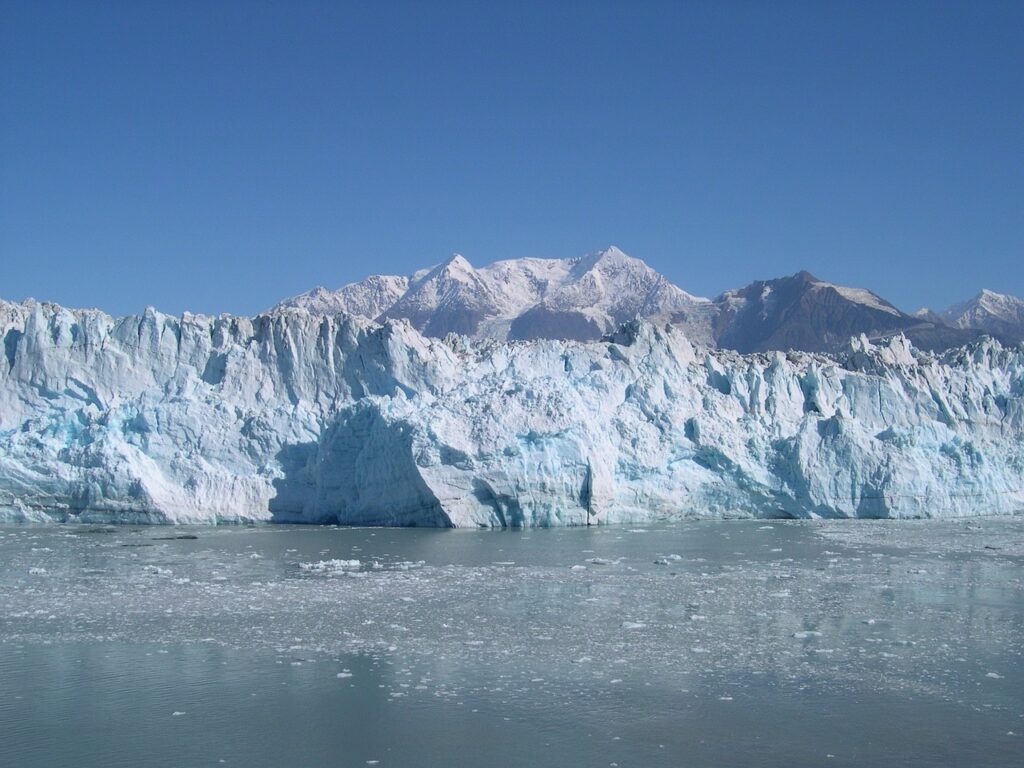
Journey to the Arctic Circle
The Arctic Circle, a line of latitude approximately 66.5° north of the Equator, runs through Alaska. This imaginary line marks the southernmost point where the sun can remain continuously above or below the horizon for 24 hours. Venturing into this region during the summer solstice, one can experience the phenomenon of the midnight sun.
The Majestic Alaska Peninsula
Stretching out from mainland Alaska, the Alaska Peninsula is a rugged and beautiful landmass known for its active volcanoes, sprawling wildlife refuges, and pristine waters. It serves as a bridge to the Aleutian Islands and is a testament to Alaska’s volcanic and geological activity.
Alaska Unveiled: Facts and Highlights
Facts About Alaska: Best Places to Explore
Alaska is a treasure trove of destinations waiting to be explored. From the serene fjords of Kenai to the bustling city of Anchorage, the state offers a diverse range of experiences. For those keen on history, the gold rush town of Skagway is a must-visit. Nature enthusiasts can lose themselves in the vastness of the Wrangell-St. Elias National Park, the largest national park in the U.S.
Did You Know? Alaska Facts
The Willow Ptarmigan, with its distinctive plumage that changes from brown in summer to white in winter, is Alaska’s state bird. This adaptive camouflage helps it blend seamlessly with its surroundings across seasons.
While Alaska boasts a land area that’s over 400 times the size of Rhode Island, its population is less than that of Rhode Island, making it one of the least densely populated areas in the U.S.
Facts About Alaska, Ever wondered about the origin of the name “Alaska”? It’s derived from the Aleut word “Alyeska,”. Which means “The Great Land.”
The highest point in Alaska is Denali, formerly known as Mount McKinley. Standing at 20,310 feet, it’s not only the tallest peak in Alaska but also the highest in North America.
Juneau, Alaska’s capital, is unique in many ways. It’s the only U.S. state capital that can’t be reached by road from the rest of the state. Instead, visitors must arrive by plane or boat.
The State of Alaska is known for its unique flag. Designed by a 13-year-old native boy named Benny Benson. The flag features the Big Dipper and the North Star, symbolizing strength, unity, and the state’s northern location.
Facts About Alaska Conclusion
Alaska, the Last Frontier, is a land of contrasts and wonders. Its vast landscapes, rich history, and vibrant cultures make it a destination like no other. From the shimmering Northern Lights of the Arctic Circle to the bustling streets of its capital, Juneau, every corner of the State of Alaska has a story to tell.
Whether you’re drawn to its natural beauty, intrigued by its history, or eager to experience its unique blend of traditions, Alaska promises an adventure that’s both enriching and unforgettable.
As you embark on your Alaskan journey, armed with these fun facts and insights, you’re sure to discover the magic that lies in this northern gem. Please share this article, facts about Alaska so that others may enjoy it, thank you.



